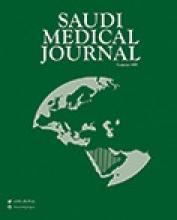Abstract
Human hydatid disease is caused by Echinococcus granulosus. Its distribution is world wide and it affects mainly the liver, but other organs could be involved. Primary involvement of pelvic organs is very rare. This is a case report of primary ovarian hydatid disease in a postmenopausal woman, diagnosed postoperatively. Surgical excision was adequate. Ultrasonography, particularly high frequency trans-vaginal, computed tomography scan and, more recently, magnetic resonance imaging are more frequently used in the diagnosis of Echinococcus cyst. They appear more reliable than many of the old tests of varying sensitivities. Whereas, there are anecdotal reports of obstetric and gynecological manifestations of echinococcosis from some Middle Eastern and North African countries, this is the first of such report from the Kingdom of Saudi Arabia. It is unclear why there is a lack of information about this condition among Saudi women, even though socio-cultural attitude to female involvement in sheep farming and animal husbandry is similar to that in other Arabic and Islamic countries. We endorse the recommendation that every gynecologist, radiologist and histopathologist should maintain a high index of suspicion for hydatid cyst, whenever a septate cystic pelvic mass is found.
- Copyright: © Saudi Medical Journal
This is an open-access article distributed under the terms of the Creative Commons Attribution-Noncommercial-Share Alike 3.0 Unported, which permits unrestricted use, distribution, and reproduction in any medium, provided the original work is properly cited.






